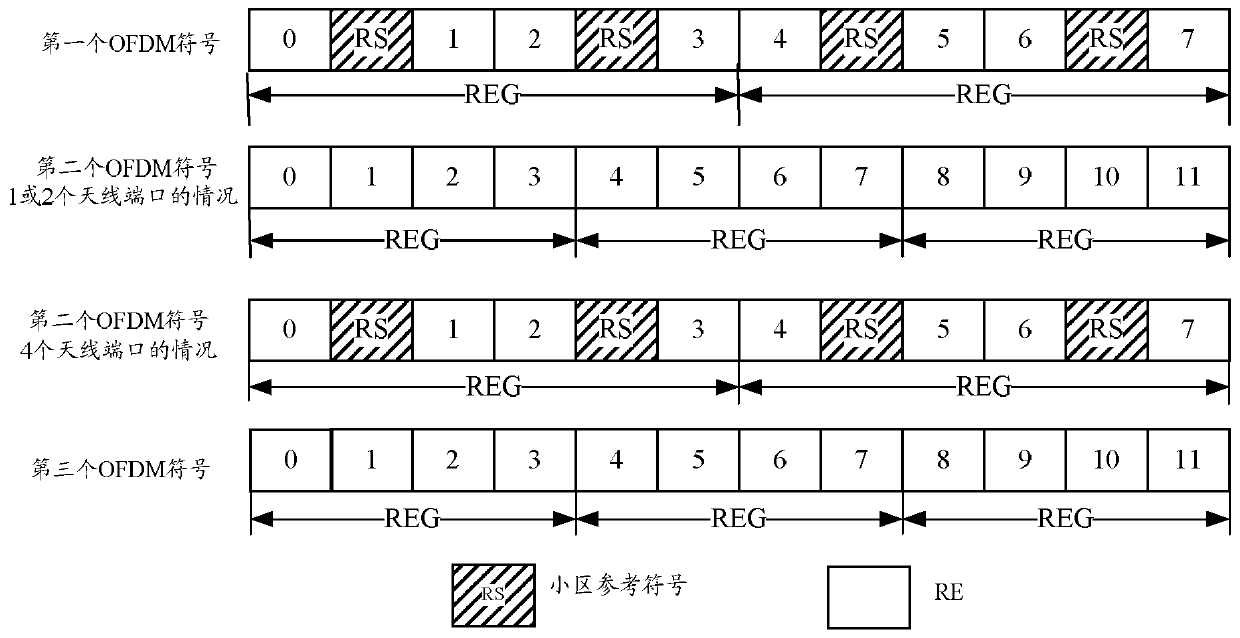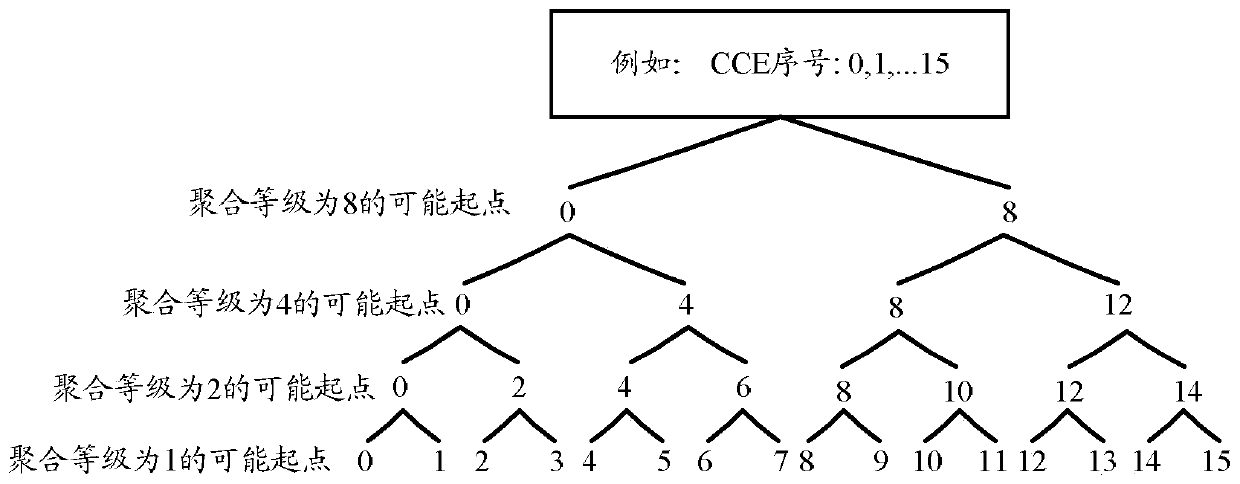Resource allocation method and device for physical downlink control channel
A technology of control channel and group control channel, which is applied in the direction of transmission path sub-channel allocation, signaling allocation, allocation standards, etc., and can solve the problems of not improving the reliability of PDCCH transmission
- Summary
- Abstract
- Description
- Claims
- Application Information
AI Technical Summary
Problems solved by technology
Method used
Image
Examples
Embodiment 1
[0109] like Figure 4 As shown, the PDCCH resource allocation method in Embodiment 1 of the present application includes the following steps:
[0110] Step S102, judging the relative positions of UEs in at least two adjacent cells;
[0111] Wherein, the method for judging the relative positions of UEs in at least two adjacent cells includes steps 11-12:
[0112] Step 11: For each cell, obtain the uplink signal strength of the UE in the cell measured by the cell from the eNB to which the cell belongs, and obtain the uplink signal strength of the UE in the cell adjacent to the cell measured by the cell signal strength;
[0113] Step 12: For each UE in each cell, judge the UE according to the UE's uplink signal strength measured in the current cell and the UE's uplink signal strength measured in S cells adjacent to the current cell The relative position of , where S is a positive integer greater than 0.
[0114]Specifically, it can be judged according to the following situati...
Embodiment 2
[0159] Regarding the method in the first embodiment above, the second embodiment of the present application provides a PDCCH resource allocation apparatus to which the method can be applied. like Figure 7 As shown, the following modules are included in the resource allocation device: a position judgment module 10, a calculation module 20 and a selection allocation module 30, wherein:
[0160] A position judging module 10, configured to judge the relative positions of UEs in at least two adjacent cells;
[0161] The calculation module 20 is used to determine the CCE aggregation level of the PDCCH of the UE for each UE, and calculate the UE-specific search space of the PDCCH of each subframe according to the CCE aggregation level of the PDCCH of the UE;
[0162] Selecting the allocation module 30, for when the position judgment module 10 judges that there are at least two UEs located in the overlapping coverage area of the adjacent cell, and the at least two UEs belong to di...
Embodiment 3
[0178] Taking Embodiment 3 as an example, the method in Embodiment 1 will be described in detail. In this embodiment, cell a and cell b are adjacent cells.
[0179] The method in this embodiment three includes the following steps:
[0180] Step S202, the eNB sends the cell public parameters of cell a and cell b and the UE-specific parameters to the resource allocation device, wherein the cell public parameters are the cell physical identity (PCI); the UE-specific parameters are C-RNTI and UE uplink signal Unique attributes, for example, time-frequency position information of CQI or SRS (Sounding Reference Signal, sounding reference symbol), etc.
[0181] The sent information is specifically shown in Table 4 and Table 5:
[0182] Table 4: Cell public parameters of cell a and UE-specific parameters
[0183] Residential physical identification UE C-RNTI Unique attributes of UE uplink signals PCI a a x1
a x2
PCI a a y1
a y2
[0184] Ta...
PUM
 Login to View More
Login to View More Abstract
Description
Claims
Application Information
 Login to View More
Login to View More - R&D
- Intellectual Property
- Life Sciences
- Materials
- Tech Scout
- Unparalleled Data Quality
- Higher Quality Content
- 60% Fewer Hallucinations
Browse by: Latest US Patents, China's latest patents, Technical Efficacy Thesaurus, Application Domain, Technology Topic, Popular Technical Reports.
© 2025 PatSnap. All rights reserved.Legal|Privacy policy|Modern Slavery Act Transparency Statement|Sitemap|About US| Contact US: help@patsnap.com



